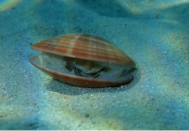Lifeasible tests copper levels in mollusks and analyzes the enrichment and purification capacity of mollusks for heavy metals based on the destruction of the aquatic environment and the flow of many heavy metals into the water, among which mollusks have a significant impact.

In recent years, the production of marine resources has continued to increase, mainly by organisms with high commercial demand, such as some mollusks, capable of accumulating different pollutants in their tissues and organs. Copper is widely distributed in such organisms, mainly attributed to industrial and domestic waste discharges, refineries, and disposal of mining materials. Copper, a trace element essential for normal physiological function in mollusks, is essential for many enzymes regulates copper-requiring enzymes, and is essential for hemocyanin synthesis. Molluscan tissues can be enriched for copper depending on the number of copper ions in the external environment. Still, excessive enrichment can have corresponding toxic effects, especially for enzymes that require copper as a component of their structure and enzymatic activity, and the resulting dysfunction can be manifested at the molecular, cellular, tissue and individual levels. Although copper is an essential micronutrient for many cellular functions, some studies have linked changes in copper levels to neurodegenerative diseases such as Alzheimer's disease. On the other hand, copper deficiency in the body can lead to diseases such as Menkes syndrome, and high levels of this metal can lead to liver diseases such as Wilson's disease.
Enrichment laboratories are conducted to examine the ability of mollusks to enrich for copper. Enrichment may not be necessary if only the amount of copper contained in the target mollusk is to be tested.
For enrichment, several groups of mollusks were placed in a glass tank, and a certain amount of Cu standard solution was added to increase the Cu concentration in each group to 0, 0.005, 0.010, 0.020, 0.050, and 0.100 mg/L. The enrichment test was performed by the semi-static water method. Water was changed every 12 hours during the whole experiment, and oxygenation was maintained for 24 h. The room temperature was controlled at 22~26℃, and the water temperature was measured to be 24.1~25.7℃ during the experiment. Shellfish with abnormal or dead behavior were retrieved during daily water changes.
The samples were weighed in the digestion tank, added HNO3 and H2O2, covered and left overnight, put into the microwave digestion tank, tightened the lid, and digested in the microwave digestion apparatus, cooled to room temperature, opened the lid, put the digestion tank on the acid drive device, and drove the acid at 170℃ until nearly dry, removed and cooled, diluted the digestion solution with water, and fixed the volume. The digest was diluted with water, and the volume was fixed. The test was performed by atomic absorption spectrometer.
Lifeasible can examine not only the copper content in the mollusks provided by the customer but also analyze the copper enrichment capacity of the mollusks and the purification capacity of different types of mollusks.
If you are interested in our services, or if the service you want is not listed, please feel free to contact us, and we will get back to you as soon as possible.
Lifeasible has established a one-stop service platform for plants. In addition to obtaining customized solutions for plant genetic engineering, customers can also conduct follow-up analysis and research on plants through our analysis platform. The analytical services we provide include but are not limited to the following:
Get Latest Lifeasible News and Updates Directly to Your Inbox
Adaptive Evolutionary Mechanism of Plants
February 28, 2025
Unraveling Cotton Development: Insights from Multi-Omics Studies
February 27, 2025